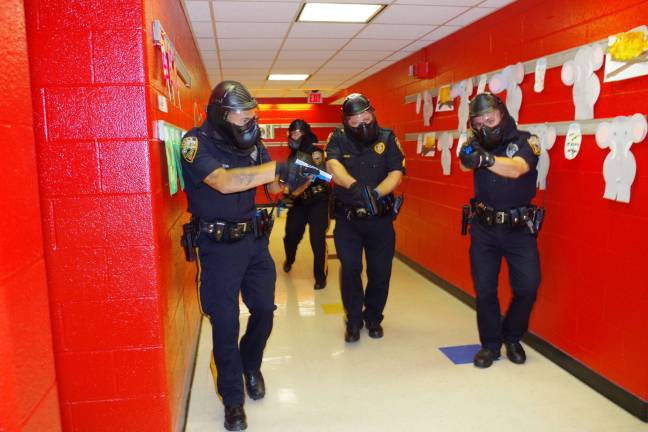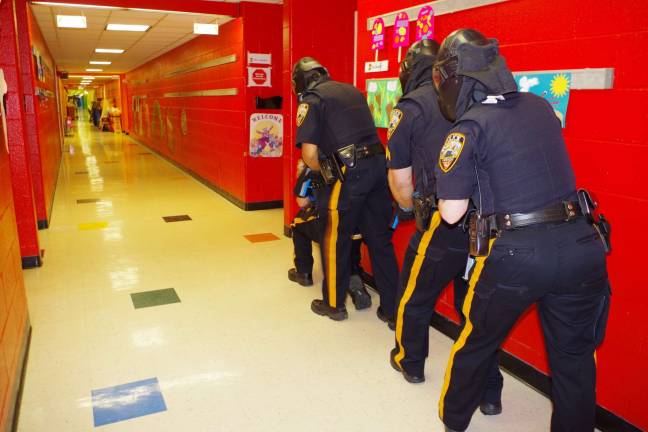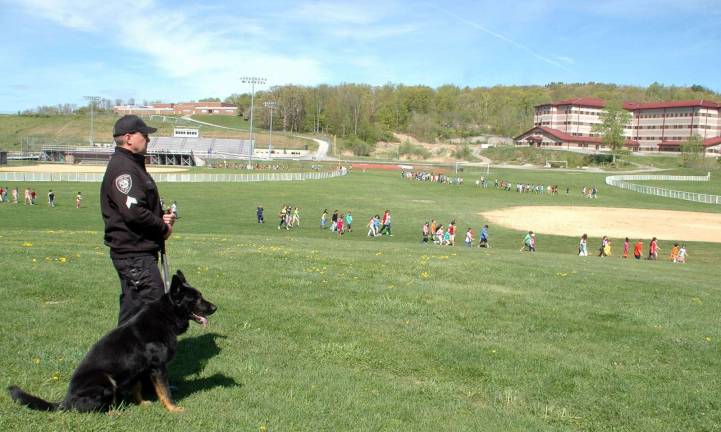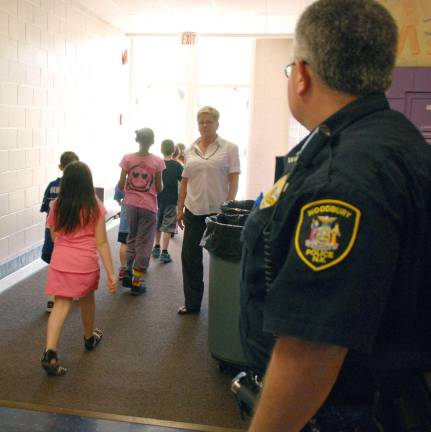Being prepared




BY ERIKA NORTON
VERNON — It has been more than three years since the Sandy Hook Elementary School shooting in Connecticut, and recently President Barack Obama unveiled his new gun control proposal. The question many are asking - especially parents of school age children - is "what are schools doing to prevent a similar tragedy?"
“Fire drills are important, but when was the last time there was a fire in a school?” said Frank Squillante, the director of security and emergency preparedness for the Monroe-Woodbury School District in New York. “I can’t even remember. But if you pick up the newspapers or watch the news, there’s a campus shooting in the United States of America… so, it’s not a matter of ‘if,’ it’s a matter of ‘when.’”
Unlike other states, New Jersey requires schools to conduct one school security drill each month during school hours and a minimum of two of each of the following security drills annually: active shooter, evacuation (non-fire), bomb threat, lockdown.
While it is still encouraged, New York and Pennsylvania do not have any requirements for lockdown or active shooter drills, although New York does require schools to have an emergency plan in place.
“With all of our emergency operations situations, whether it’s a bomb scare whether it’s an active shooter, whether it’s another reason to evacuate or lockdown the building, all of those situations are practiced twice a month in our school district,” Tobin said.
During drills, schools collaborate with local law enforcement, allowing officials to provide feedback and an opportunity to become familiar with the school buildings. In the fall, the Vernon Township schools held an active shooter drill with the New Jersey state police, according to Interim Superintendent of Schools Arthur DiBenedetto.
“Essentially, what they do is they ask us to go through our procedures as if there was an active shooter, and then they give us a critique of the reaction,” DiBenedetto said. “They give us recommendations; so, it’s something that we take extremely seriously.”
One of the recommendations given to Vernon schools after their last drill was to put room numbers inside the rooms in a location visible to those who are hiding, in case a substitute is in the room and needs to know the room number, according to DiBenedetto. Other recommendations included placing room number signs in the windows visible from the outside, to put red tape on the floor indicating the safe corner of the room for lockdowns and that all utility rooms be locked at all times.
“If there is an active shooter circumstance, the school goes into an immediate lockdown,” he said. “The teachers are instructed to take their students to a corner of the room that is away from the door where someone looking in cannot see if there are occupants. The doors are locked from inside. There are various signals that designate the end of a drill. It’s a little difficult with substitutes, but we make sure that substitutes have an awareness of what to do in the drills.”
While New Jersey schools are required to run active shooter drills, many schools conduct them with staff only, no students. This is due to concerns of whether it is worth it to have students practice as well.
According to Russo, parents are concerned with the trauma related to that level of reality. There are also studies stating that drawing attention to active shooter situations can be dangerous.
“If there is somebody within the community... that’s even thinking that way, it almost brings sensationalism to it, and there’s some concerns,” Russo said.
“We do it (active shooter drills) with students because we want students to know exactly what’s supposed to take place,” said Anthony Riscica, interim superintendent of West Milford Township Public Schools.
“We’ve had a couple of bomb scares earlier in the year," said Riscica. "So what happened consequently is that our students were moved to alternate locations from the building that had the scare. And then what happens is once the students are moved into those alternate locations, we put all the schools into lockdown until we have clearance and we know everything's okay, just in case. It may be a diversion that they’re trying to create, or something like that. So in order to keep everybody safe, we lockdown all of the schools during that time until we have clearance."
Many districts, have cameras along with a buzzer system. Staff in the main office can then see the visitor on a screen and determine whether to allow them access to the building.
Staff members in West Milford must swipe a card to gain access.
“All of our schools have swipe cards. Staff are the only people who have swipe cards to get into and out of the building and it’s only specific entrances," said Riscica. "All of the rest of them are locked all the time. When a guest is trying to get into a building, they have to ring a bell, and in most cases we also have video cameras that can show the person who’s standing at the door. Then they have to come into the main office to sign in.”
Sparta Township also has a visitor management system, where all visitors must show their driver’s license so a background check can be conducted upon entry, according to Tobin. Other surrounding school districts are looking into installing similar systems as well.